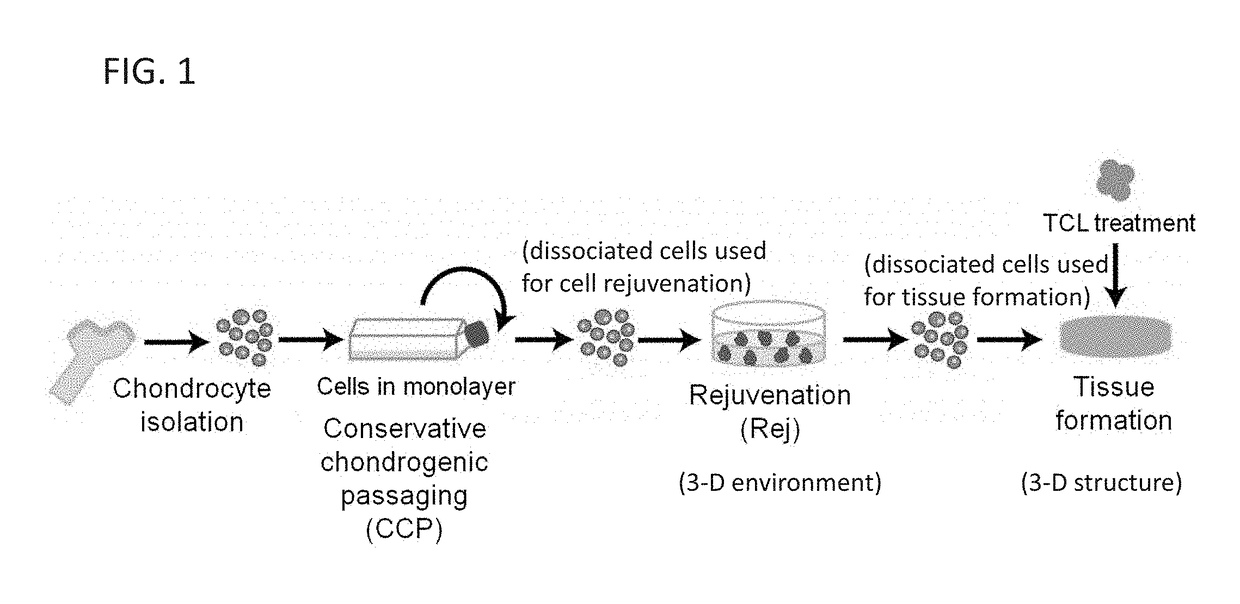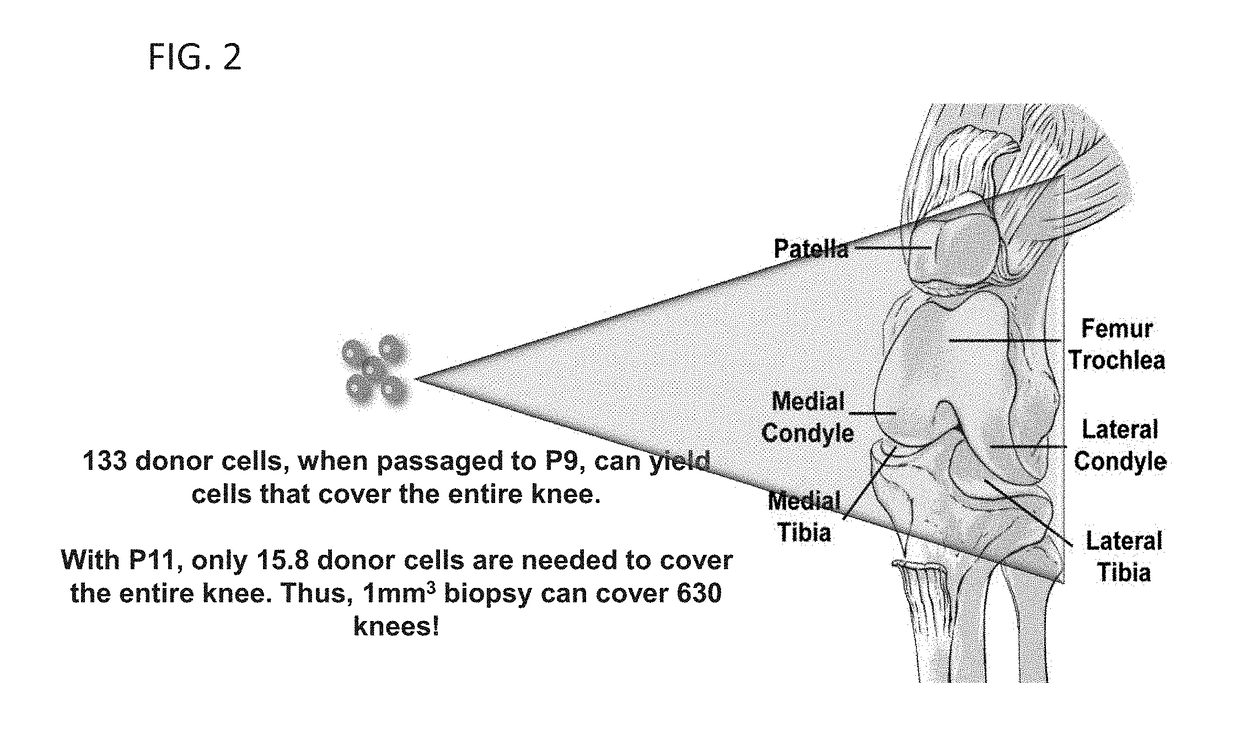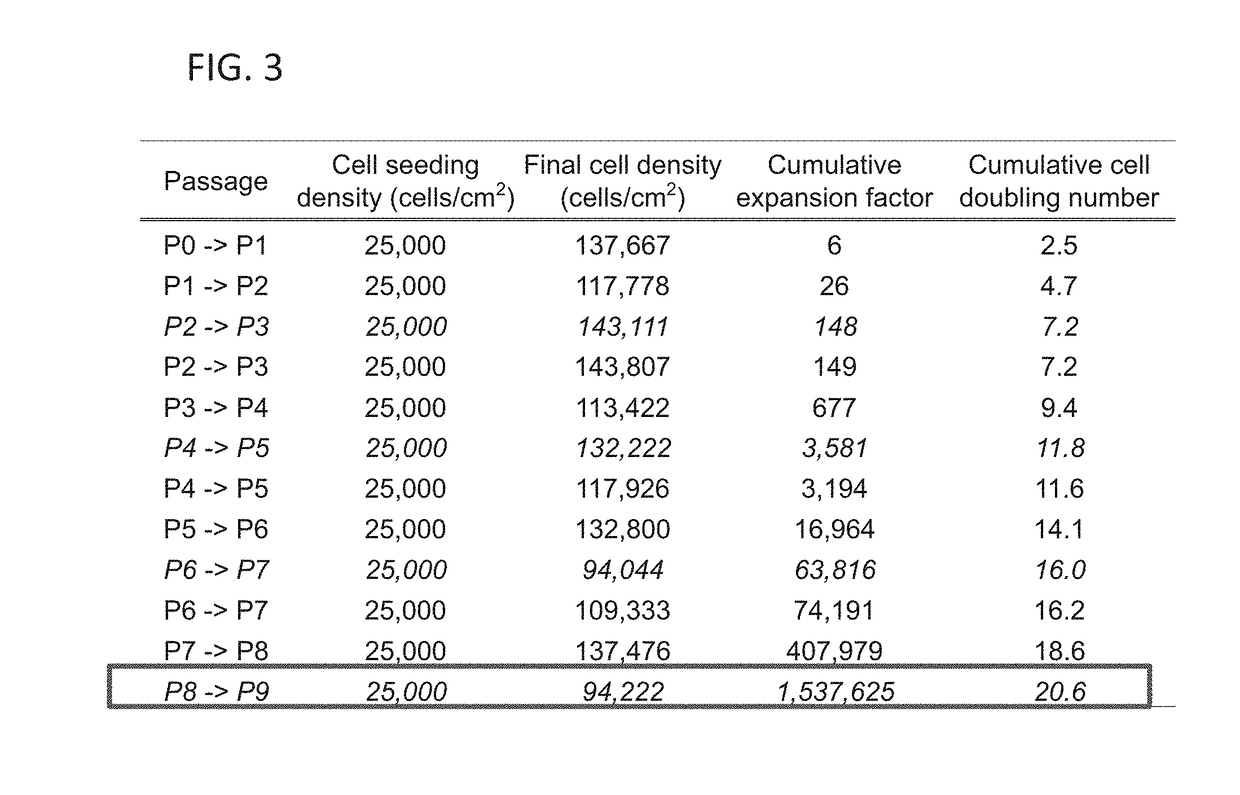Methods and systems for conserving highly expanded cells
a cell and expansion technology, applied in the field of cell passaging, can solve the problems of not being predicted, using studies attempting to restore chondrogenic potential, etc., and achieve the effect of conserving the chondrogenic phenotype and significantly altering the morphology of tissues formed using human cells
- Summary
- Abstract
- Description
- Claims
- Application Information
AI Technical Summary
Benefits of technology
Problems solved by technology
Method used
Image
Examples
example 1
[0090]It was surprisingly found that CCP and rejuvenation, followed by TCL treatment, reverts hACs at higher passages (≤P3) to a chondrogenic phenotype, leading to formation of mechanically robust human neocartilage similar to those formed by hACs at lower passages.
[0091]Example 1 describes the restoration of hACs passaged up to P11 and the efficacy of a combined treatment of TGF-β1 (T), chondroitinase-ABC (C), and lysyl oxidase-like 2 (L) (termed “TCL treatment”) on further improving functional properties (e.g., augmenting effects of rejuvenation) of engineered human neocartilage as a function of passage number. The present invention is not limited to the methods, systems, compositions, and treatments described herein.
[0092]For reference, hACs are an autologous cell source used clinically to repair cartilage lesions. In addition to current surgical approaches, including chondroplasty, microfracture, mosaicplasty, and autologous chondrocyte implantation (ACI), a variety of tissue-en...
PUM
 Login to View More
Login to View More Abstract
Description
Claims
Application Information
 Login to View More
Login to View More - R&D
- Intellectual Property
- Life Sciences
- Materials
- Tech Scout
- Unparalleled Data Quality
- Higher Quality Content
- 60% Fewer Hallucinations
Browse by: Latest US Patents, China's latest patents, Technical Efficacy Thesaurus, Application Domain, Technology Topic, Popular Technical Reports.
© 2025 PatSnap. All rights reserved.Legal|Privacy policy|Modern Slavery Act Transparency Statement|Sitemap|About US| Contact US: help@patsnap.com



